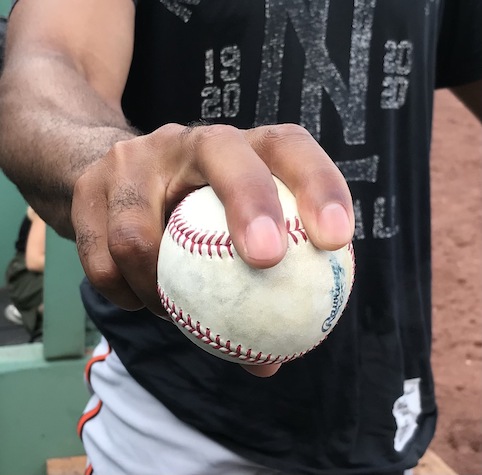Giancarlo Stanton’s Long Single
Every now and then, something happens in a major league game that arouses my interest as a baseball physicist. In the sixth inning of the recent American League Wild Card game, the Red Sox were up 3-1. With Aaron Judge on first and one out, Giancarlo Stanton hit a laser of a shot that bounced high off the left-center field wall at Fenway, barely missing a home run. As it happened, Judge was thrown out at home plate, while Stanton took second on the throw. It was truly a game-changing play. But what I really want to talk about is Stanton’s shot, particularly the distance the ball would have gone had it reached field level unobstructed. That is the usual meaning attached to “home run distance.” Although not normally done, I want to apply it to a single.
As it turns out, there is a wealth of data available that allows us to figure this out. First, we know the Statcast measurement of the launch conditions:
| Exit Velocity (mph) | Launch Angle (deg) | Spray Angle (deg) | Spin Rate (rpm) | Spin Axis (deg) |
|---|---|---|---|---|
| 114.9 | 17.8 | -11.9 | 1115 | 184 |
The most important of these parameters, exit velocity and launch angle, are publicly available. Of lesser importance to the calculation are the spray angle, spin rate, and spin axis. Note that the ball is hit very hard and, typical of Stanton, at a somewhat low launch angle. For both those reasons, the spin rate is not particularly large and the spin axis indicates nearly perfect backspin (i.e., very little sidespin). Note also that the small negative spray angle means the ball was hit slightly to the left-field side of center. Read the rest of this entry »

